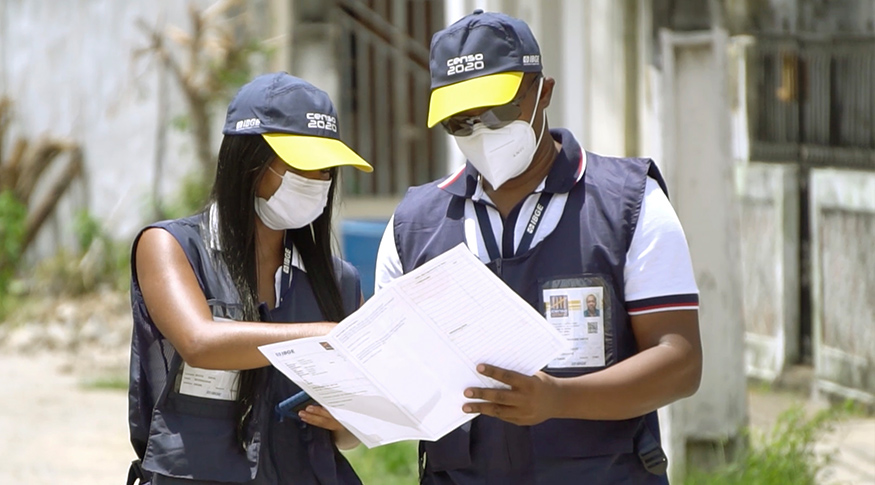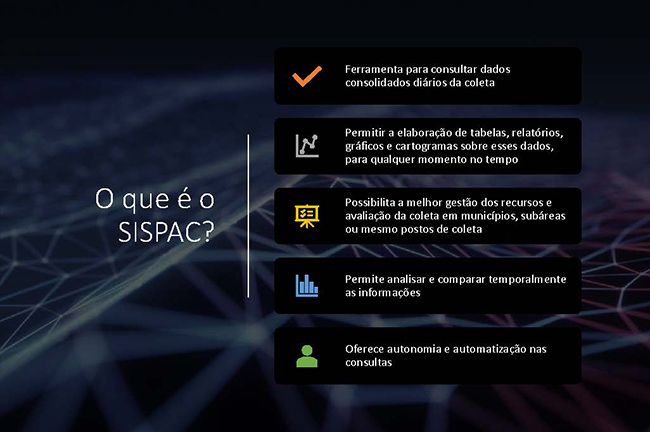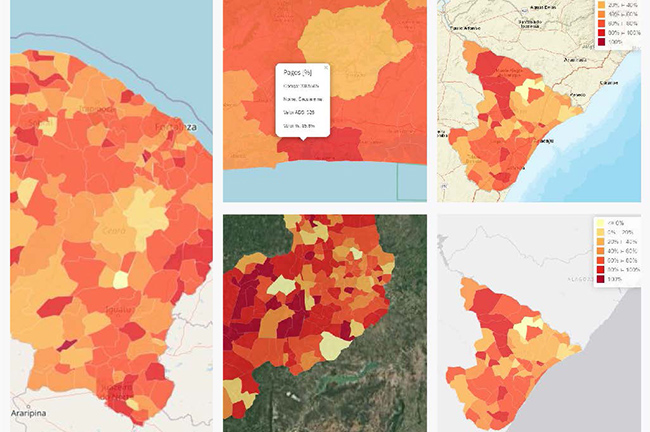2022 Census
Analysis system controls evolution of Census down to municipal and data collection station levels
January 17, 2023 10h00 AM | Last Updated: January 18, 2023 03h53 PM

Developed by IBGE technicians, the Census Analysis Plan System (SISPAC) has been a key tool to follow up the data collection of the 2022 Population Census. The monitoring is made through dashboards, which allow to follow up the status of the data collection at municipal level down to data collection station level. Last Friday (13), an internal seminar detailed the features of the platform to control the operation.
The presentation aimed at showing SISPAC as a support to the census operation. The way of access, the architecture of the application (with all the databases it uses) and how this information is used to control the Census in the entire national territory were demonstrated, as well as the facilities and advantages to guarantee the quality of the operation.
The system is also one of the tools that subsidize the Technical Coordination of the Population Census in accomplishing the end-of-operation protocol of the municipalities in the entire Brazilian territory, coupled with other tools, like the Integrated System of Managing and Control (SIGC), the Interactive Geographic Platform (PGI) and the Census Dashboard.
The Computer Support manager, Raphael Soares, explained that SISPAC is a tool limited to registered users, key to follow up the data collection by the Census staff, helping the decision taking of supervisors, census agents and servants involved in the census operation. The information is organized into five themes - data collection, data collection duration, payment, supervision and productivity -, which allow to follow up the evolution of the operation. The system allows to control the operation at state and municipal levels down to data collection station level, as well as it controls the operation by date.
Among other advantages, SISPAC allows to export data to other applications, like SAS, Excel and PDF, providing its users with more flexibility to build the analyses. Most screens provide an option to generate cartograms. In the municipality of Rio de Janeiro, for instance, it is possible to check the amount of enumeration areas that have already completed the data collection, informing whether the enumerators have already been paid for that area or not. In order to better control the supervision of the Census, SISPAC provides some specific charts with heatmaps of the enumeration areas and the amount of households whose enumerators have already returned either one, two or three times to collect the information.
It is also possible to check the qualification of the interviews through tables with the amount of occupied private households with either face-to-face, on-line or telephone interviews. The information is shown either in absolute or percentage figures. Other information available is pending interviews due to absence of residents or refusal to attend the enumerators, as well as households where a resident received the e-ticket to answer it through the Internet, but didn´t do it yet.
An important chart of SISPAC, which is serving as a parameter for the current phase of the Census data collection, is the one that shows the municipalities and their closure status. Only those with the data collection virtually closed enter in this chart. The chart brings a whole set of information key for completing the municipality, like the population in 2010, population estimated for 2021, population enumerated in 2022, average per resident and total number of households registered by the Brazilian Electricity Regulatory Agency (ANEEL).






“SISPAC is a tool used to check the data consolidated daily during the Census data collection. The system allows the generation of tables, reports and cartograms on top of the data collected anytime,” explains the Computer Support manager.
The purpose is to help to manage the resources and assess the data collection for a whole set of municipalities (sub-area) in each one of the 5,570 municipalities, as well as for a data collection station in a way that the operation managers have a real-time view whether the data collection is delayed or it is evolving faster. “That assessment can be made in a temporal way, providing autonomy for the consultations. The target users are the Steering Committee, the Census National Coordination, the coordinations of the Directorate of Surveys who help in the Census analysis and operation and technical and operational coordinators in the entire country. Later, area coordinators and supervisors were allowed to access it,” adds Soares.
He highlights that one of the major challenges of a census operation is to follow up the data collection, where to focus and detect what should be followed up. “The great differential of SISPAC is that it not only follows up the last picture of the data collection, but also keeps this information stored over time. Therefore, one can see how the data collection was one or two months ago and compare with its current evolution,” explains him.
“The idea is that the information remains available from now onwards. When we undertake the 2030 Census, it will be possible to know the behavior of the data collection of the 2022 Census. In addition, one can have the information consolidated both per Federative Unit and per municipality and down to data collection stations,” highlights Soares.
He explains that SISPAC had several inspirations and undergone changes after tests and interactions with technicians, who helped in the methodology and in the identification of gaps for following up the Census data collection. State superintendencies also demanded features, most frequent procedures and tasks were detected and automated, as well as ideas from previous censuses were included.
Visualization and consolidation architecture
SISPAC has a layered architecture and two modules. Every information collected in the field by the Mobile Data Collection Devices (DMCs) are transmitted through the mobile network (the DMCs have 3G and 4G chips) to the IBGE servers and the production database. Later, the database undergoes some reading and transformation processes and the information is delivered to an analytical database, where the information is read and analyzed.
“The analytical database includes every Census information, like the CNEFE addressing and the paradata, all of them consolidated into dozen tables. SISPAC has two modules. ETL (Extract, Transform and Load) reads, consolidates information and stores it in another database. Once this information is consolidated, the other module, SISPAC Web, produces the screen where users make consultations, generate graphics and build cartograms,” clarifies Soares.
Consolidation occurs because records are stored in different tables. Since August 1st, when the data began to be collected, information is stored at municipal and data collection station levels with the total number of households, people, men and women. The database is updated every day at 7:30 AM.
“Currently we have more than 160 days of data collection with all the aggregate data. In the home screen, we have graphs that show the total for Brazil and the total number of enumeration areas and their status - completed, supervised. Along the data collection, we manage to follow up the status of each FU by color. He have noticed some problems and amended them,” points out Soares.
“We can also check the evolution of the amount of persons and questionnaires completed and the comparison between basic and sample questionnaires. We also understand that the SISPAC information will be very valuable in future operations. We are keeping the photograph of each day and then we will have a film. By understanding how the operation occurred from August to the end, we might think in future operations and evolve in the census operation,” concludes him.


















